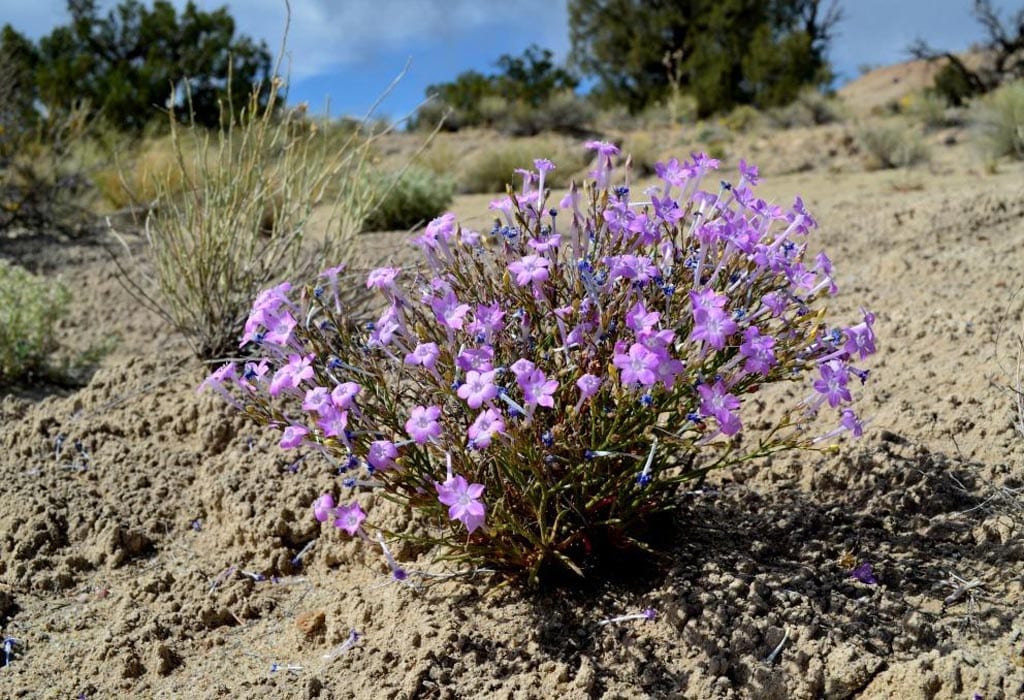Current work in wildlife, rivers, public lands, and climate
Press Releases
Positive step in defense of rare New Mexico plants threatened by fracking
The positive 90-day findings for both species comes in response to scientific petitions filed by WildEarth Guardians calling on the Fish and Wildlife Service to list the gilia and cactus under the Endangered Species Act. Both imperiled plants inhabit the Grater Chaco Landscape of northwestern New Mexico. The region’s public lands, cultural integrity, and biodiversity continue to be threatened by fracking and oil and gas extraction.
Clover’s cactus is found only in Rio Arriba, Sandoval, and San Juan counties in New Mexico, while the Aztec gilia is found only in San Juan County. Both plants only live in a geological formation called the Nacimiento Formation. Unfortunately for the plants, this formation is also the site of intensive fracking that has been authorized by the U.S. Bureau Land Management.
“The Bureau of Land Management has been rubber stamping fracking in this region for decades, running roughshod over the Greater Chaco Landscape and communities,” said Rebecca Sobel, Organizing Director for WildEarth Guardians, a member of the Greater Chaco Coalition. “If unfettered fracking is not reined in, the health of the landscape and these endemic species remains in grave peril.”
Previous Freedom of Information Act requests to the agency revealed internal strife, oil and gas companies failing to comply with their Conditions of Approval and monitoring requirements, and poor record-keeping in regards to transplanted Clover’s cactus and their survival rates. The Aztec gilia population has declined steeply since 1995.
“Up to this point, the Bureau of Land Management has failed in its duty to preserve rare plants in the Nacimiento Formation from oil and gas drilling and associated development,” said Lindsay Larris, Wildlife Program Director for WildEarth Guardians. “The goal of WildEarth Guardians’ listing petition to the U.S. Fish and Wildlife Service is to make sure these rare species don’t get thrown under the bus for fracking, but instead get the Endangered Species Act protections they need to survive and thrive.”
Since the ESA’s enactment, 99 percent of listed species have avoided extinction, and hundreds more have been set on a path to recovery. The law is especially important as a defense against the current extinction crisis; species are disappearing at a rate much higher than the natural rate of extinction due to human activities, resulting in what some scientists term a “biological annihilation.” According to a recent United Nations report, over a million species are currently at risk of extinction. Researchers estimate that, if not for ESA protections, 291 species would have gone extinct since the law’s passage in 1973.

Aztec gilia. Photo by Daniela Roth.